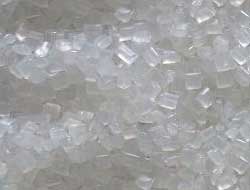Global oversupply of PE/PP challenging margins for producers

A surge in new plastics chemical capacity coming from low-cost producers in North America, the Middle East and China is driving the global market for PE and PP to oversupply, which will pressure margins for producers and change the global competitive landscape, according to new analysis from US research firm IHS.
IHS estimates that more than 24 million tonnes of new PE capacity will be added globally during the 2015 to 2020 timeframe and more than one-third of that, approximately 8 million tonnes will come from the US, which will significantly increase the US net-export position for PE and PP and other chemicals, rebalancing the global chemical trade flows that have favored the Middle East for decades.
“The surge of shale gas-derived feedstock has enabled North American PE and PP producers to achieve a level of cost-competitiveness that is unprecedented, since the Middle East has traditionally served as the world’s lowest-cost producer for these products,” said Nick Vafiadis, global business director of polyolefins and plastics, IHS Chemical. “In the near-term, this excess capacity is good news for North American converters, who will be more competitive on a global basis due to the increased competition associated with the PE capacity expansions. However, on the producer side, economics will be challenged in the near-term as global capacity expansions exceed demand growth and pressure margins.”
The research firm also says that chemical producers are looking to take advantage of continued low natural gas and natural gas liquids prices in the US, which is enabling the significant expansion of these gas-based projects.
Beyond North America, China is also growing its influence as a key, low-cost provider of PE, thanks to its production additions from coal-to-olefins technology, Vafiadis said. China is expected to add approximately 17 million tonnes of new PE/PP capacity during the next five years, according to IHS, which will drive further market volatility.
“The US and China are now competing with the Middle East for global PE/PP market share which should have significant impact on pricing and margins, so at IHS, we expect to see big changes ahead for the global industry,” Vafiadis said. “There will be significant trade imbalances as we see North America and the Middle East both add more PE capacity than is warranted for their domestic markets, so exports will be key for producers.”
In Europe, imports of PE into Europe from the Middle East in 2016 have surpassed 2015 numbers as the region continued to see strong demand and offered attractive net-backs for Middle East producers, IHS said. HDPE import figures for January and February 2016 overall, were the highest of the last eight years at 148,000 tonnes, and exports were lowest for the same period at only 42,000 tonnes. IHS said a similar, but less pronounced, trend is occurring for other PE grades as well.
“According to our IHS Chemical forecasts, we expect Asian pricing for PE to remain depressed for the remainder of 2016, and with European producers giving little margin away, this will mean netbacks from the Middle East to Europe will remain attractive in the coming months,” Vafiadis said. “The net result will mean PE imports will continue to arrive in Europe at relatively high levels from the Middle East.”
These market realities will also drive much of the conversation when major industry executives, along with other leading IHS experts, speak at the PEPP 2016: 24th Annual Polyethylene/Polypropylene Chain Global Technology and Business Forum, June 1-3, 2016, at the Swissôtel Zürich in Switzerland.
(PRA)Copyright (c) 2016 www.plasticsandrubberasia.com. All rights reserved.












































